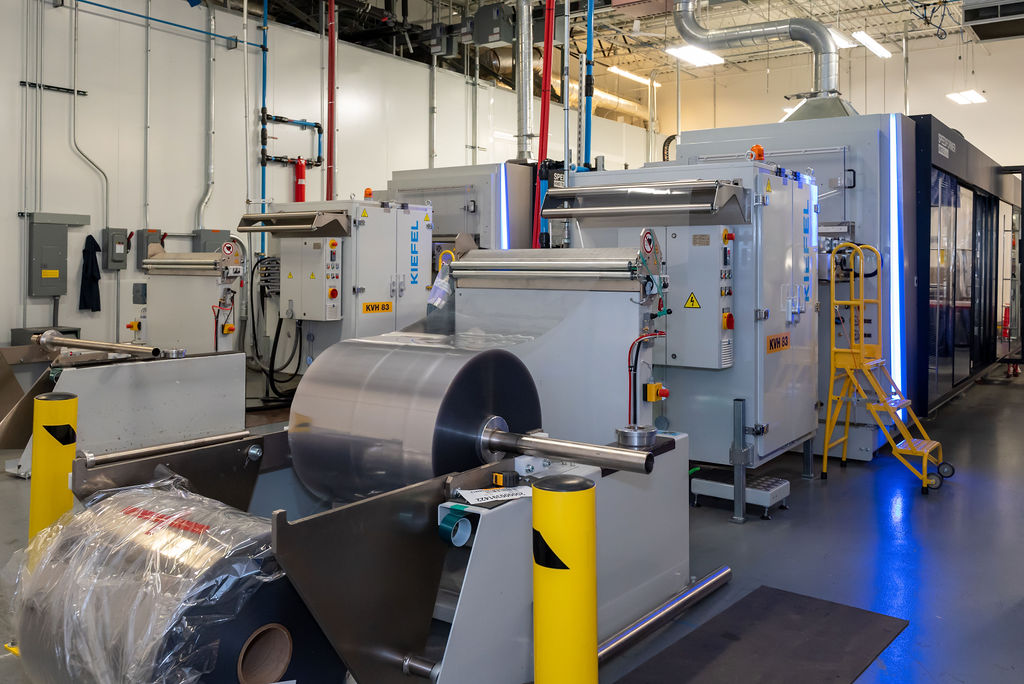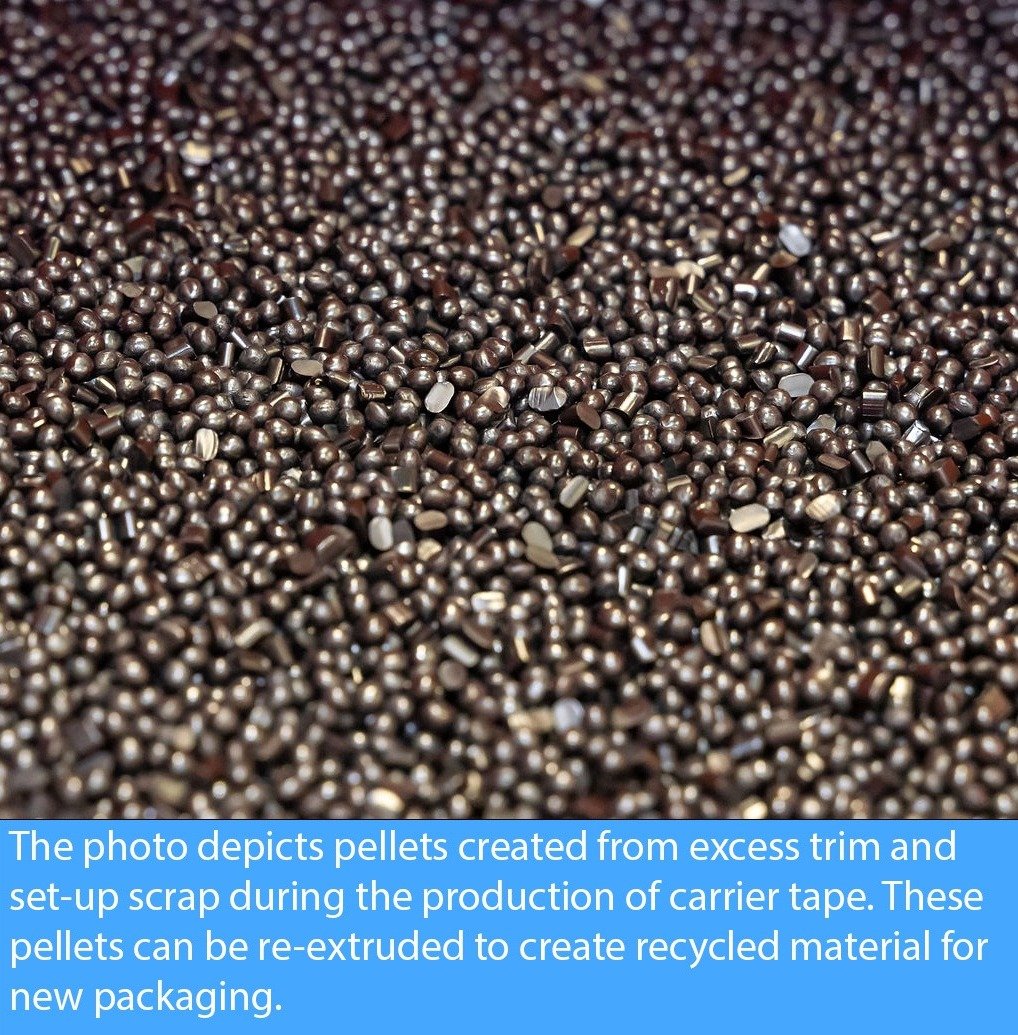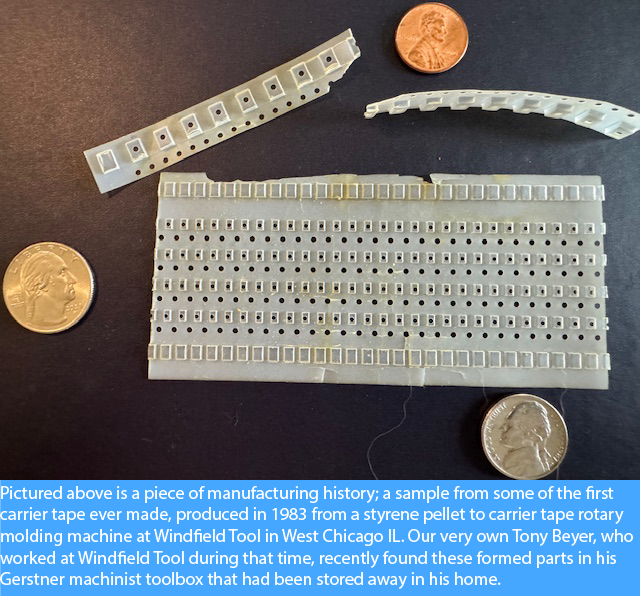Earth Day at Tek Pak: Shaping A More Sustainable Future
The thermoforming industry, responsible for everything ranging from food packaging, small electronics shields, and even medical trays, has been...
3 min read
 Tony Beyer
:
Oct 6, 2023 9:00:00 AM
Tony Beyer
:
Oct 6, 2023 9:00:00 AM

Over time, thermoforming, a versatile manufacturing method, has seen significant developments and innovations. This method, which entails heating a plastic sheet and shaping it into different forms, has developed to satisfy the needs of a variety of markets, including healthcare, automotive, aerospace, and packaging. We'll examine the development of thermoforming manufacturing in this blog, emphasizing the significant breakthroughs and developments that have revolutionized this sector.
Thermoforming has its roots in the early 1900s; Robert H. Peters was awarded the first patent for a thermoforming machine in 1938. Initially, thermoforming was mostly employed for straightforward tasks like creating affordable, lightweight packing materials. It was a labor-intensive, hand-operated procedure with little accuracy.
Tek Pak was founded in 1992 by executives from the thermoforming industry to produce specialized electronics packaging known as carrier tape. Tek Pak’s first carrier tape-producing machine was built in the home garage of one of the partners. Shortly thereafter, Tek Pak moved into its current facility in Batavia, IL, and began shipping its products locally. In 1996, Tek Pak introduced the industry-changing 72-hour prototyping service for carrier tape, which opened opportunities around the world. By providing new carrier tape designs quickly to the burgeoning electronics and telecommunications markets, Tek Pak became known as the company that provides high-quality custom carrier tapes rapidly.
A key achievement in thermoforming production has been the creation of a broad spectrum of materials that are appropriate for the procedure. The range of plastics that could be thermoformed was initially limited, but engineers and researchers have since increased the options. Transparent, impact-resistant, and flame-resistant materials are just a few of the many attributes thermoformers can now choose from, ranging from PVC and PETG to high-performance materials like polycarbonate and acrylics.
Thermoforming has been transformed by the applications of computer numerical control (CNC) technology. The shaping process can be precisely and automatically controlled with CNC equipment. As a result, thermoformed products are now much more consistent and reproducible, which makes them perfect for high-precision applications like medical devices and car interior components.
The process of thermoforming requires heating, and advancements in heating technology have been crucial in this regard. The effectiveness and consistency of heating plastic sheets have increased with the introduction of radiant heaters and infrared heating systems. This lowers the possibility of errors and improves the overall quality of thermoformed items by guaranteeing that the material reaches the appropriate temperature uniformly.
As environmental responsibility has grown in importance, thermoforming has changed to use more environmentally friendly materials and procedures. In order to lessen their impact on the environment and satisfy consumer demand for sustainable packaging and goods, thermoforming businesses are incorporating recycled plastics, biodegradable materials, and closed-loop recycling systems.
Robotics and automation have become essential to thermoforming production, boosting productivity and cutting expenses associated with labor. Robots are increasingly employed in quality checking, material handling, and trimming, among other duties, which enables manufacturers to make complicated parts more quickly and precisely.
Digital technology has further revolutionized thermoforming manufacturing in recent years. Engineers can correctly forecast the behavior of materials throughout the forming process and optimize designs with the use of simulation tools and computer-aided design (CAD) software. This digital method lessens the need for physical prototypes and helps cut waste.
By 2000, Tek Pak had expanded to over 110 employees and $10MM in annual sales. Late in 2000, the triple play of the dot-com bust, the Y2K bubble, and the restructuring of the telecommunications market combined with the migration of electronics manufacturers to Asia resulted in a significant reduction in Tek Pak’s business in the US and Europe. The early 2000s for Tek Pak was a time of restructuring and diversification. Tek Pak expanded the tooling department and began offering prototype and production tooling to the general thermoforming market with a concentration on prototype medical device packaging. Tek Pak also began offering precision thermoformed plastic components for the electronics industry. By mid-decade, Tek Pak had changed the product mix from 95% carrier tape to 50% carrier tape sales and successfully weathered the worldwide transformation of the electronics supply chain. In 2005 Tek Pak obtained ISO 9001 Certification and installed our first laser trimmer in 2007.
In 2023, Tek Pak, Inc. an award-winning company, remains a closely held private corporation with 5 facilities in the western Chicago suburbs. Tek Pak is proud to offer over 120 employees, good jobs in the US manufacturing sector. With over $24MM in total annual sales, Tek Pak continues to export to 15+ countries worldwide, and to customers primarily in the electronics and healthcare markets. The story doesn't end there; Tek Pak is constantly making continuous improvements to their business and looks forward to continuing to serve their clients and customers.
Manufacturing thermoforming has advanced significantly since its modest origins. Technological developments in digital technology, automation, sustainability, heating methods, and materials have brought this adaptable process to new heights. Today, thermoforming is a highly precise, sustainable, and economical manufacturing technology that can produce a wide range of goods for various sectors. We may anticipate more technological advancements that will influence the direction of thermoforming manufacturing in the future.
Check out our Resources Library and review our detailed technical paper Thermoforming 101: The Science of Shaping the Packaging We Use. Our commitment to our clients is to provide them with high-quality and innovative thermoforming solutions, and we would love to discuss your packaging needs. To get started, you can visit our contact page, give us a call, or request a quote.

The thermoforming industry, responsible for everything ranging from food packaging, small electronics shields, and even medical trays, has been...

The world of electronics relies on countless tiny components, from resistors to integrated circuits, that work together to power our devices. But...

Thank you to everyone who took time out to vote for Tek Pak’s Carrier Tape nomination in the Illinois Manufacturers’ Association’s (IMA) annual “...